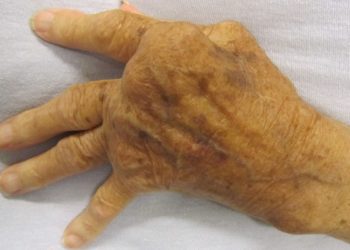Mpox cases in Africa continued to increase following WHO emergency declarations
1. The number of mpox cases in Africa increased leading up to the first mpox declaration of a Public Health Emergency of International Concern (PHEIC) by the World Health Organization (WHO), and this trend continued to worsen following the emergency declarations.
2. The highest burden of mpox in Africa has been in the Democratic Republic of Congo (DRC), which continued to report an increasing number of weekly mpox cases in 2024.
Evidence Rating Level: 2 (Good)
Study Rundown: Mpox was first identified in humans in the DRC in 1970. For decades afterward, it remained largely confined to rural areas in Central and West Africa, and as such, has not garnered broader attention. In 2017, a mpox outbreak in Nigeria became one of the largest recorded at the time, with over 120 confirmed cases, but was not sufficiently prioritized until it contributed to global spread in 2022, ultimately leading to the first mpox PHEIC declaration by the WHO on July 23, 2022, followed by a second PHEIC declaration on August 14, 2024. The present analysis described the changes in the epidemiology of mpox cases in Africa leading up to and after these two PHEIC declarations. Leading up to the first mpox PHEIC declaration, the number of mpox cases in Africa and the number of African countries reporting cases were increasing. This trend continued to worsen following the emergency declarations. The highest burden of mpox in Africa has been in the DRC. Limitations of the study included inconsistent data collection and reporting among African countries, which hampered geographic comparisons, and underreporting of cases and deaths due to limitations in health care access, shortages of diagnostic kits, inadequate specimen transport, and the occurrence of asymptomatic cases. Nevertheless, this study provides valuable insights into the mpox disease burden in Africa leading up to and after the PHEIC declarations and highlights the need for increased public health measures in the DRC to reduce the risk of the further global spread of mpox.
Click to read the study in NEJM
Click to read an accompanying editorial in NEJM
In-Depth [epidemiological study]: This study analyzed the mpox cases and deaths reported to the Africa CDC from January 1, 2022 to October 30, 2024 to identify temporal variations, geographic distributions, and epidemiologic trends leading up to and after the mpox PHEIC declarations in 2022 and 2024. Data were collected via routine weekly reports by African Union member states and were based on both clinical and laboratory diagnoses. Leading up to the 2024 mpox PHEIC declaration, a total of 45,652 mpox cases were reported from 12 African countries, resulting in 1492 deaths for a case fatality rate of 3.3%. Over this period, weekly laboratory-confirmed cases increased by a factor of 2.8 while all weekly reported cases, including clinical diagnoses, increased by a factor of 4.3. Following the PHEIC declarations, the number of reported weekly mpox cases more than doubled in nine African countries. The case fatality rate rose from 2.6% in 2022 to 4.4% in 2023, then declined to 2.8% in 2024. Geographically, within the African Union, the DRC has been the most affected country, with 19,513 cases and 601 deaths reported from January 1, 2024 to August 18, 2024. The average number of reported cases per week in the DRC was 919 in 2024, compared with 281 in 2023. During this period, the DRC accounted for 77.4% of all mpox cases in Africa and 99.1% of all deaths. This rise in mpox cases in Africa can be attributed to multiple factors, including the discontinuation of smallpox vaccination campaigns, which provided cross-protection against mpox, ongoing conflict, and a fragile health care system. In summary, leading up to the first mpox PHEIC declaration, both the number of mpox cases in Africa and the number of African countries reporting cases were increasing. This trend continued to worsen following the emergency declarations, with the DRC being the most affected.
Image: PD
©2025 2 Minute Medicine, Inc. All rights reserved. No works may be reproduced without expressed written consent from 2 Minute Medicine, Inc. Inquire about licensing here. No article should be construed as medical advice and is not intended as such by the authors or by 2 Minute Medicine, Inc.









